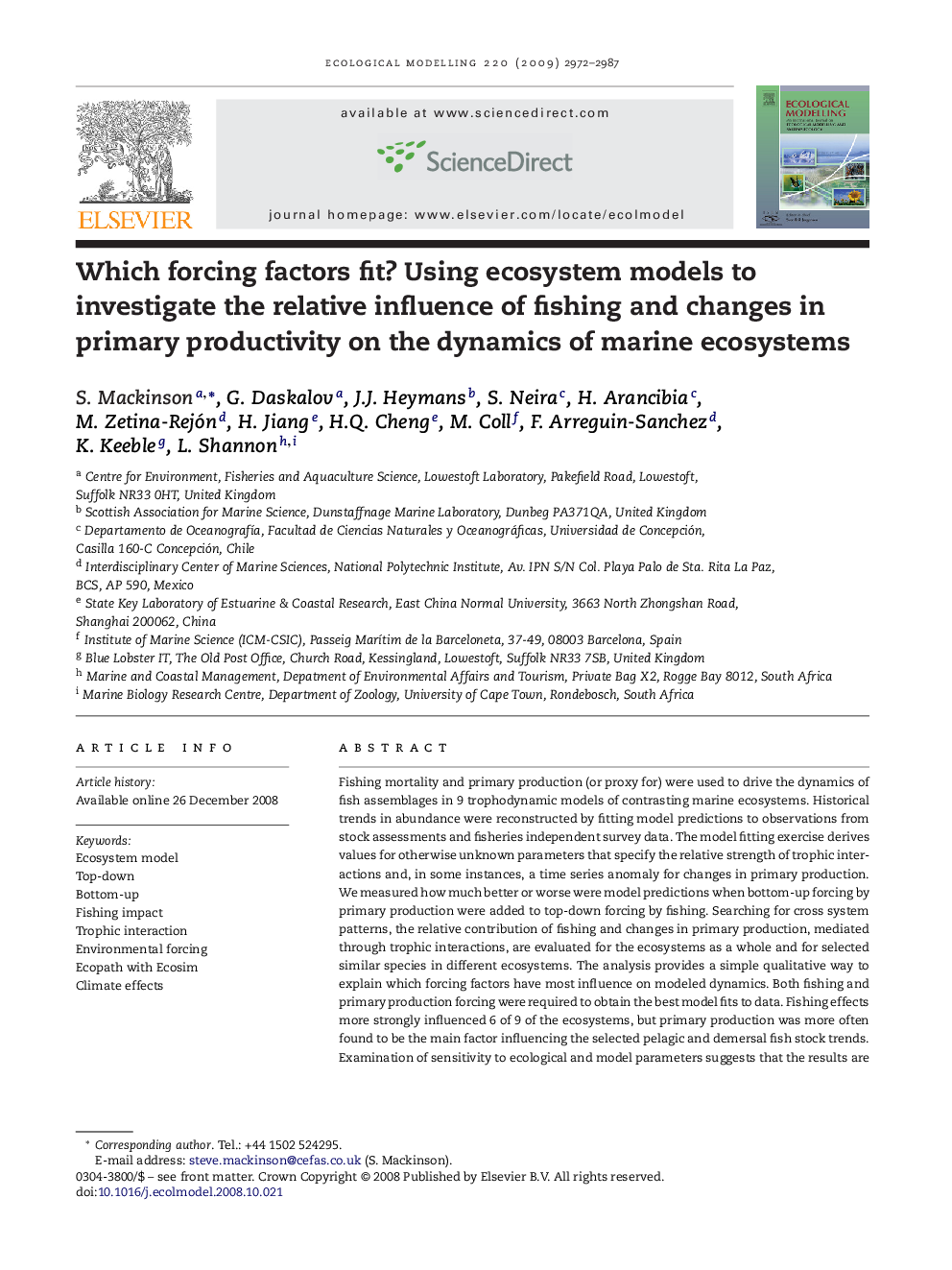| Article ID | Journal | Published Year | Pages | File Type |
|---|---|---|---|---|
| 4377638 | Ecological Modelling | 2009 | 16 Pages |
Fishing mortality and primary production (or proxy for) were used to drive the dynamics of fish assemblages in 9 trophodynamic models of contrasting marine ecosystems. Historical trends in abundance were reconstructed by fitting model predictions to observations from stock assessments and fisheries independent survey data. The model fitting exercise derives values for otherwise unknown parameters that specify the relative strength of trophic interactions and, in some instances, a time series anomaly for changes in primary production. We measured how much better or worse were model predictions when bottom-up forcing by primary production were added to top-down forcing by fishing. Searching for cross system patterns, the relative contribution of fishing and changes in primary production, mediated through trophic interactions, are evaluated for the ecosystems as a whole and for selected similar species in different ecosystems. The analysis provides a simple qualitative way to explain which forcing factors have most influence on modeled dynamics. Both fishing and primary production forcing were required to obtain the best model fits to data. Fishing effects more strongly influenced 6 of 9 of the ecosystems, but primary production was more often found to be the main factor influencing the selected pelagic and demersal fish stock trends. Examination of sensitivity to ecological and model parameters suggests that the results are the product of complex food-web interactions rather than simple deterministic responses of the models.
